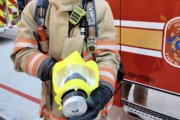Q: I’m interested in getting into geocaching, so where should I start?
A: If you love the outdoors and treasure hunting or want a high-tech way to get the kids outside, geocaching is worth checking out.
Items have been hidden around world (called caches) that can be found by following online clues and coordinates along with something most of us take for granted these days: a GPS device.
The traditional cache is inside a waterproof container along with a logbook for those that find it and in some cases, an inexpensive trinket, medallion (a.k.a. geocoins) or a variety of other small items that can be fun to discover.
Today, caches can be just about anything (large or small), including virtual caches that have no container to be found, just the location and instructions on what to do when you find it.
GPS History
There was a time when the average citizen had no access to the Global Positioning System (GPS) as it was a military network designed to help target missiles.
That all changed in 1983 when the Regan administration opened it up to the general public but used ‘selective availability’ so it was only accurate to 100 meters (328 feet). This was done to make sure the military still had a global advantage.
In 2000, the Clinton administration determined that the advantage that was once important was somewhat outdated and that the innovations that would benefit from a more accurate network were important. It got rid of selective availability, which allowed for accuracy to be within 3 meters (9.8 feet).
Geocaching Begins
Shortly afterward, a GPS enthusiast wanted to test the accuracy improvements, so he came up with the ‘Great American GPS Stash Hunt’ and posted the information online.
The instructions he added for those that found the cache was to take something and leave something, which continues to this day.
Today, there are over 3 million active geocaches in 191 countries and on every continent in the world, so no matter where you go, there’s likely a cache to be found near you.
Getting Started
A website dedicated to geocaching launched just months after the GPS network was made more accurate back in 2000 and is still the best resource for getting started.
Since every smartphone has GPS capabilities, the most obvious way to get started is by downloading their app, which is available for both iOS and Android users: https://geocaching.com
As with many apps these days, it uses the ‘freemium’ model which provides the basic service for free and unlocks advanced features when you pay.
Shortly after launching the app, you’ll be presented with a page to encourage you to upgrade to the premium membership. I’d suggest that you click the little X in the upper corner to bypass this until you’ve had a chance to get familiar with the whole process.
Once you give the app permission to use your phone’s location, it will take you through a quick tour and show you caches near you.
When you tap on one of them, you’ll get a description along with lots of other info about the cache and navigation tools.
By default, the app is set to vibrate your phone when you get close to a cache and once you’ve found it, you can tape on the ‘log’ option to leave a message for the creator of the cache.







